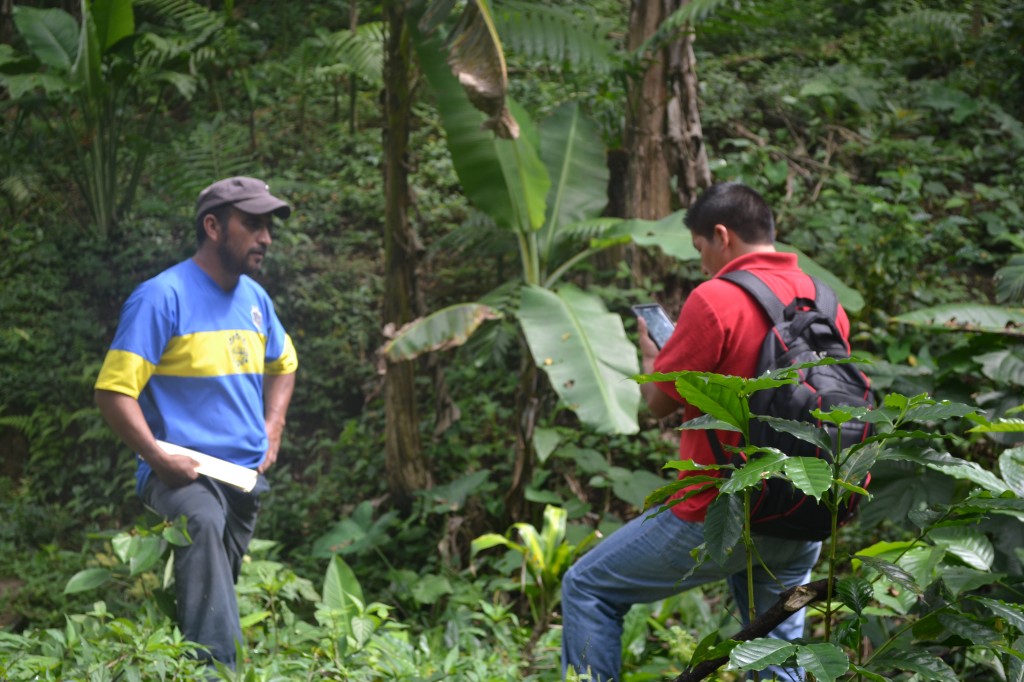The Rainforest Alliance is holding true to their mission of conserving biodiversity and ensuring sustainable livelihoods! With the help of iFormBuilder, their team has been able to do more, collecting data that includes GPS locations, inserting geo-referenced photos, and working simultaneously in countries around the world.
I recently caught up with Paul Stanchfield at Rainforest Alliance and had a chance to learn about how their teams are taking iFormBuilder through the rainforests, into the fields, and around the world. Paul just returned from a trip to Mexico where he and his team collected incredibly valuable data, all while using the iFormBuilder platform!
The Rainforest Alliance is holding true to their mission of conserving biodiversity and ensuring sustainable livelihoods! With the help of iFormBuilder, their team has been able to do more, collecting data that includes GPS locations, inserting geo-referenced photos, and working simultaneously in countries around the world.
I recently caught up with Paul Stanchfield at Rainforest Alliance and had a chance to learn about how their teams are taking iFormBuilder through the rainforests, into the fields, and around the world. Paul just returned from a trip to Mexico where he and his team collected incredibly valuable data, all while using the iFormBuilder platform!

EE: So, tell me about what Rainforest Alliance does as an organization.
PS: The Rainforest Alliance works to conserve biodiversity and ensure sustainable livelihoods by transforming land-use practices, business practices, and consumer behavior. We work closely with many of the world’s largest food, beverage, and consumer companies.
EE: How do your teams use iFormBuilder on a daily basis?
PS: We use iFormBuilder as a tool to collect data, complete verification, and for Monitoring and Evaluation (M&E) activities across the globe. Recently, in rural Mexico, I led a team of enumerators and agronomists to collect household/farm characteristics, sustainability practice adoption, and socioeconomic indicators. In about a month, [iFormBuilder] will be rolled out in the Ivory Coast with roll outs in China and Indonesia following.
EE: Before iFormBuilder, how did you gather data?
PS: We used paper forms as an alternative to iFormBuilder. In reality, we use a mix of the two methods since each has its pros and cons. Ultimately, the paper versus iFormBuilder decision depends on a number of factors such as how many farm observations we are collecting, customs restrictions, internet connection, respective language(s), and the level of trust that has been established with our enumerators and consultants.
EE: What results have you achieved by using iFormBuilder?
PS: Recently, we collected some extremely difficult to come by and highly valuable baseline data on farm sustainability practices and key characteristics and socioeconomic indicators. Using iFormBuilder, we were able to georeference every farm sampled and, in doing so, verifying that our enumerators were where they needed to be. We also collected first hand pictures of good and unacceptable farm practices and verified farmer interviews based on farmer pictures and signatures. Data collected are ultimately used to focus on the long-term economic, social, and environmental concerns.
EE: What is your favorite thing about the iFormBuilder platform?
PS: There are a number of things I like about iFormBuilder. Here are six that stand out.
- Once built out online, it is easy to translate survey into other languages using the “localization” function;
- Creating data entry restrictions and if-then relationships between questions for quality control purposes;
- Built in GPS, georeferenced photos, and signatures are immediately attached and coded to surveys;
- Shorter data collection/submission cycle facilitating monitoring of data collection and feedback;
- Can view and check data in almost real-time, allowing for corrections to be made quickly;
- Cleaning and analyzing data doesn’t have to be done in the same country (remote oversight of enumerators’ work).
EE: How do you measure the return on investment for using iFormBuilder at Rainforest Alliance?
PS: I break down the data collection process into three respective sub-components: Preparation, Data Collection/Field, and Cleaning/Analysis. I then complete an analysis of each sub-component. In each country, the local realities are so different that we are constantly comparing costs/benefits between paper and iFormBuilder.
EE: What are three main benefits that other NGOs would get out of using iFormBuilder?
PS: The three that come to mind are:
- There is less of a chance of data being lost – assuming synchronization can be done frequently.
- It is a fast and streamlined process to centralize data and export data outputs in a basic spreadsheet format.
- It is much more difficult to falsify data.
Thanks so much for taking time to chat with us today, Paul! Keep up the great work and continue to be iFormBuilder Champions! Learn more about Rainforest Alliance.



